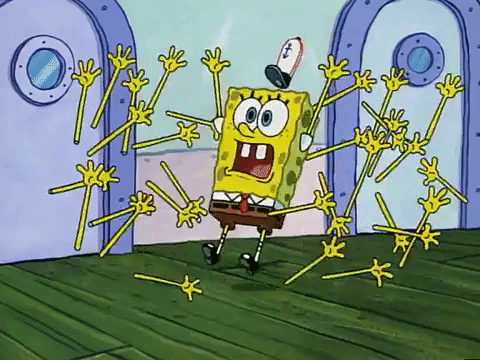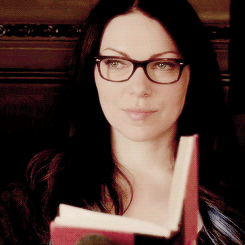Mary Shelley's introduction to Frankenstein offers an enlightening context to who she was a person, but also her knowledge of what made horror so enrapturing. I personally love horror and I'm fascinated by all things spooky. I'm fascinated by Shelley's self-aware nature when creating a horror story. She knew that horror goes beyond the pages and is psychological. The quote above from her introduction makes me as a fan of horror, go, "YES! THIS IS IT!: Source: https//i.gifer.com/U45X.gif
Source: https//i.gifer.com/U45X.gif
 Source: https//i.gifer.com/U45X.gif
Source: https//i.gifer.com/U45X.gif
Shelley is a very intentional writer. She wanted her ghost story to heavily effect the reader and cause a culmination of emotions-- fear, excitement, uncertainty, and panic. This to me says that she was aware of her creation and the conceptional idea for Frankenstein could not just be a simple story. It had to be one that made the reader's heart stop at a bump in the night after the pages of the story had been shut.
 Source: https://typeset-beta.imgix.net/lovelace/uploads/615/81ff7780-0886-0133-4590-0a2ca390b447.gif
Source: https://typeset-beta.imgix.net/lovelace/uploads/615/81ff7780-0886-0133-4590-0a2ca390b447.gif
Conception is a word that is synonymous with Frankenstein. The word means to be born or to gain life. The basic premise of this famous novel is that a doctor creates an abomination against life by assembling a human from stolen body parts and bringing it to life. Conception in this sense is not the usual image of a woman giving birth to a child and bringing it into the world. This image is much more perverse and has undertones that are questionable in morality.
 Source: https://i.giphy.com/media/uYaKN0JX5YupG/giphy.gif
Source: https://i.giphy.com/media/uYaKN0JX5YupG/giphy.gif
Looking at the conception of Frankenstein in a wider lens offers further insight into Shelley's intentions as a writer. Not only was the conception of this story borne from a night with Romantic poets and the dare to all create a ghost story, but it was also borne from Shelley's own quiet introspection of what is a good ghost story. Shelley wanted to create something horrifying. Frankenstein in and of itself is a creation. It's a story that required much time and effort to imagine, write, and edit. In many ways, Frankenstein was Shelley's child. It was brought into the world through the same amount of labor and love that a woman brings a child into the world. Shelley gave life to this story and because of that it is more than just a ghost story. Frankenstein's monster is very much a living, breathing entity that lurks within the pages and preys upon humanity's worst fears.
 Source: https://i.giphy.com/media/1SRaXI2J1o7vO/giphy.gif
Source: https://i.giphy.com/media/1SRaXI2J1o7vO/giphy.gif
A vast majority of Shelley's 1831 introduction to Frankenstein discusses her process of invention and how the story was not borne completely from nothing. "Invention, it must be humbly admitted, does not consist in creating out of void, but out of chaos; the materials must, in the first place, be afforded: it can give form to dark, shapeless substances but cannot bring into being the substance itself." (page 8) This sentence shows the excruciating process that Shelley went through in developing an idea. Invention takes time and effort. Time and pieces of oneself have to be given to create. Through this passage we see that while Frankenstein is a labor of love it was also a taxing and grueling creation. One must wonder if Shelley looks upon Frankenstein with the same horror that the doctor eventually looks upon the monster with...
What are your thoughts on conception and creation in regards to writing novels? Do you think Shelley's own struggle with creating a tale is mirrored in the themes of creation? Let me know down below in the comments.
See you next time,
Sarah Johnson


No comments:
Post a Comment